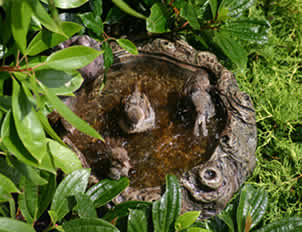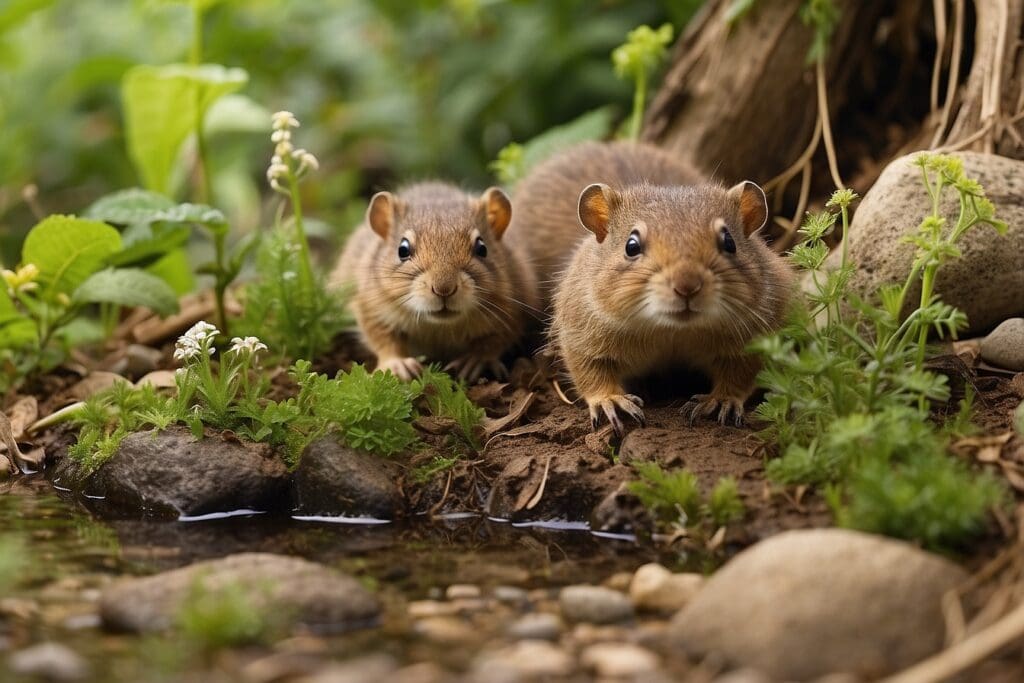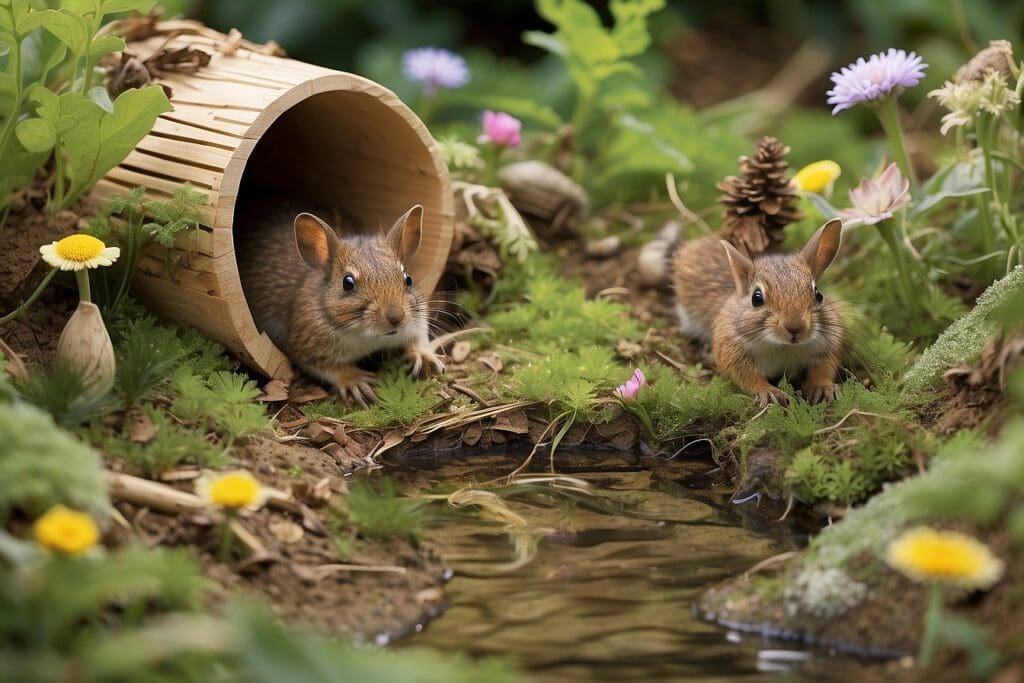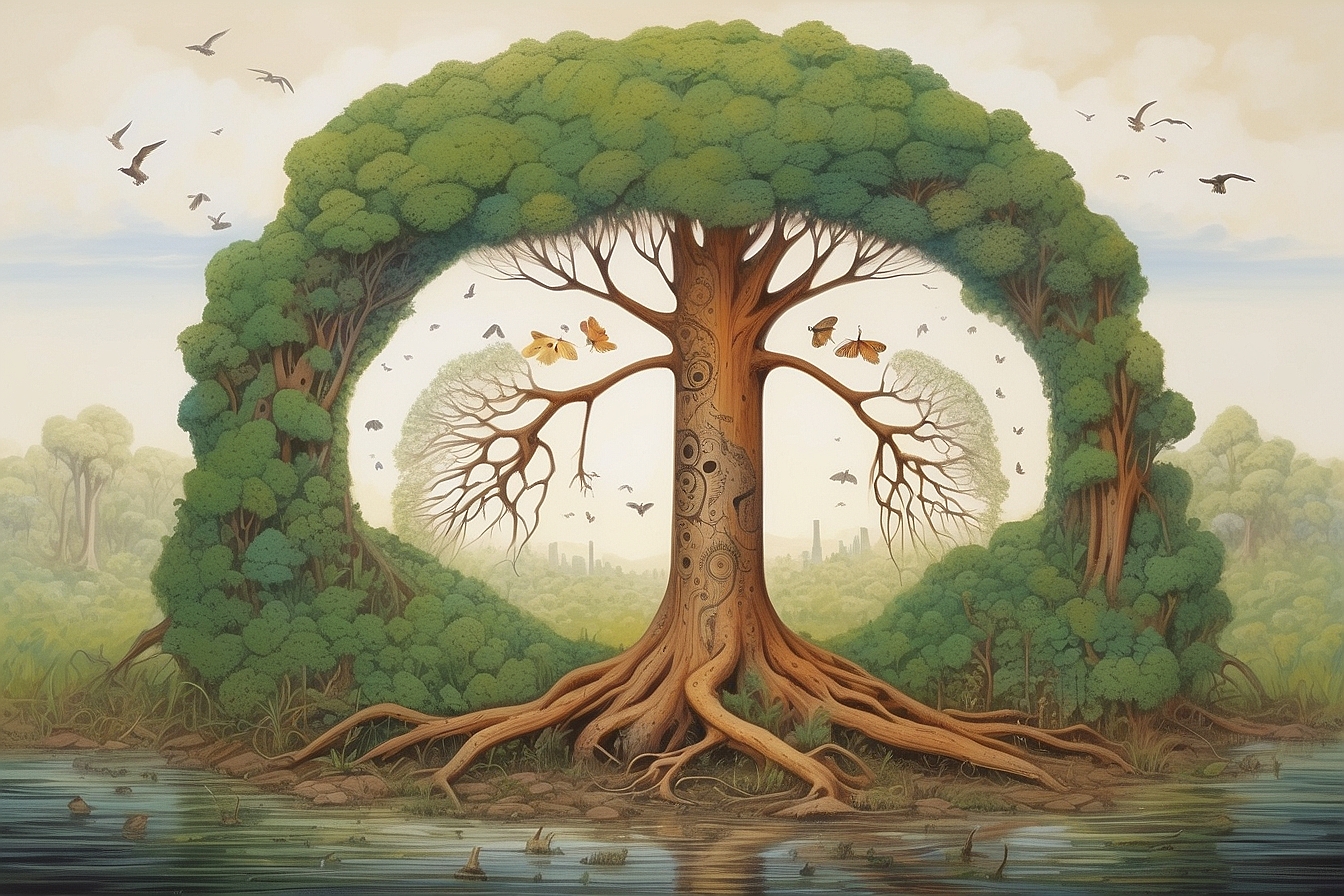Since we moved to our “rural-burban” neighborhood, I’ve noticed that we’re not the only ones calling this spot home. Take our bird population: the grackles appear in April to setup their raucous housekeeping in our river birches. During the summer, I can also count on robins, cardinals, chipping sparrows, cedar waxwings, wrens, goldfinches, purple finches, chickadees, and mourning doves. Recently migrating Baltimore orioles stopped through. Sometimes there’s so much racket that it sounds like an avian Grand Central Station.

The National Wild life Federation’s Backyard Habitat program encourages households to make their backyards “creature-friendly”
by designating them “Certified Wild life Habitats.” (A habitat is a place where plants and animals thrive naturally). Seventy thousand backyards are already certified, and some whole towns have gotten certified (Zionsville, IN ,just north of Indianapolis, is certified). My family’s applying for certification this year. Why? Commercial and resident development shrink habitats: backyard habitats provide sanctuary. TheNational Wildlife Association website has all the details about getting certified (www.nwf.org/backyard/certify.cfm), but here are some ideas to get you started. Hint: this is a great project to do with your kids!
Creatures need four things for survival: food, water, places for cover, and places to raise their babies. Take a walk around your property-you may already be providing some or all of these four necessities, even if your yard is small.Keep in mind that a perfectly manicured lawn doesn’t offer as much for wildlife as diverse plantings, and if you want to provide sanctuary, it’s best to leave some parts of your yard a little untidy.
Food. Bird or squirrel feeders provide food as well as plants that offer seeds, fruit, or nectar. I keep native plants like coneflower and black-eyedsusans in my yard and leave the seedheads up all winter; these and other flowering plants attract birds and beneficial pollinators such as bees and butterflies. Birds love my mulberry tree, but it’s a nuisance-there are much better fruit-bearing trees available! My butterfly garden contains nectar-producing flowers, but also milkweed, the only food monarch butterfly caterpillarseat. Asclepias tuberosa (often soldas butterfly weed) is ornamental milkweed with pretty orange flowers.
Water. Ponds, birdbaths, and puddles are good water sources for wildlife. I set stones in my birdbaths so butterflies have a place to land for a sip. With the threat of West Nile Virus, it’s best to eliminate unnecessary standing water unless you want to create a mosquito sanctuary.
Places for Cover. Evergreen trees and shrubs provide excellent cover, as does ornamental grass, which is also a food and nesting source.Nesting houses for birds-plain or fancy-provide a place for them to get out of the storm and raise their babies.
Places to Raise Young. As long as your neighbors don’t mind, keep a little brush or woodpile at the edge of your yard. They make excellent cover and nesting places. My honeysuckle vine feeds the hummingbirds and almost always hosts a family of mourning doves. Attract bats to your yard by placing bat houses on trees or fences. Not everyone likes bats, but they love to eat the bugs that love to eat us-one good reason to keep them around.

True, some forms of wildlife (plant-chomping deer, Japanese beetles, or certain friends and relations!) aren’t as welcome as others. But living in a habitat can be a joyful thing, especially if you have kids. We’ve watched a chipmunk wash its face and robins feeding their young. We’ve seen a hawk snatch a blue jay, discovered a nest of baby rabbits in our green beans, waited like expectant parents for Monarch larvae to hatch into butterflies, and drifted off to sleep to the sound of spring peepers.
It’s good to be part of the neighborhood.
©First North American Rights





